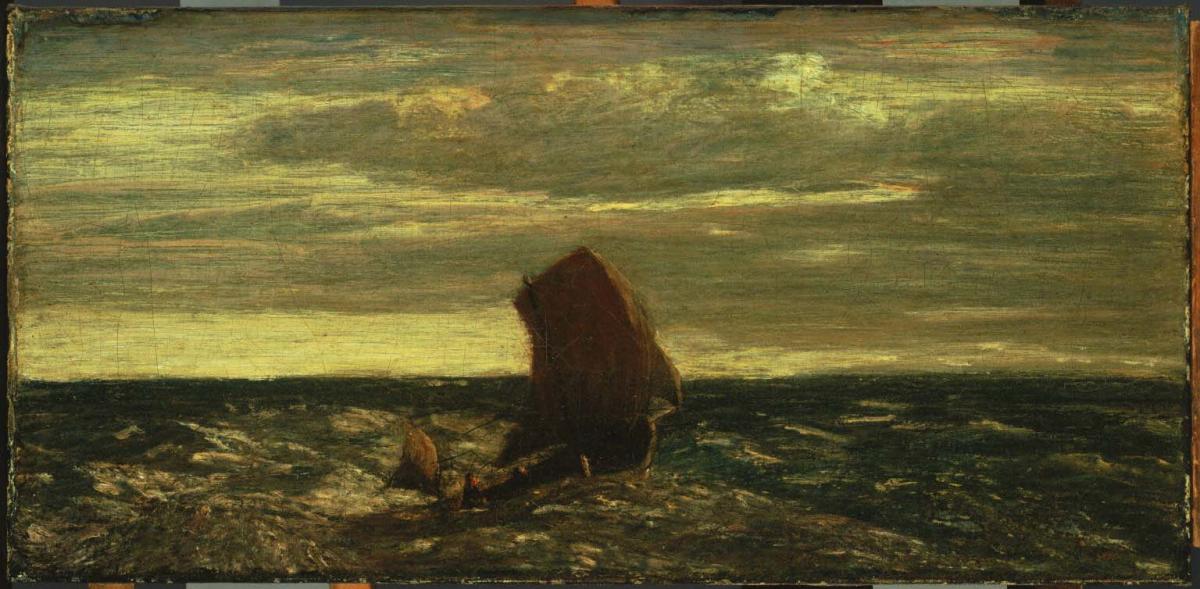Homeward Bound
Albert Pinkham Ryder ( c. 1893-c. 1894 )

Homeward Bound suggests, both in its title and composition, an adventure whose safe conclusion is almost at hand. Its theme closely parallels the notions of romantic and symbolist artists and writers of the nineteenth century, such as Delacroix, Redon, and Poe.
This painting has been deemed one of the best and most representative Ryder marines of the 1890s, with its fresh technique and optimistic view. Ryder painted it as a gift for John Robinson, an English artist and sea captain on whose ship Ryder traveled aboard. The serene mood of Homeward Bound no doubt reflects Ryder’s enduring friendship with Captain Robinson, whom he had known since 1883.
Though small in scale, Homeward Bound is full of emotion. Ryder nicely contrasts the vastness of the ocean with the lone boat on the water, representing a fusion of pictorial and thematic elements. The upward tilt of the sail gives the image its buoyancy; placed directly in the center of the canvas, it breaks the otherwise continuous horizon line and seems to anchor the composition. In Homeward Bound, Ryder brushed on unblended paint in thin, opaque layers, capturing the sea in a greenish light and showing a brisk wind that breaks the surface of the water into foaming crests and the sky into strata of coursing clouds.
Frederic F. Sherman sold the painting with great reluctance, writing to Duncan Phillips, “I must confess I had intended to keep that work.” Phillips, who appreciated both its realism and its broader symbolic meaning, wrote, “All of Ryder is in the small marine entitled Homeward Bound….[T]hat little boat at the center of the composition as each of us is at the center of his particular universe, symbolized the soul’s adventure as it traverses the vast, uncharted solitude, travelling toward the unknown.”